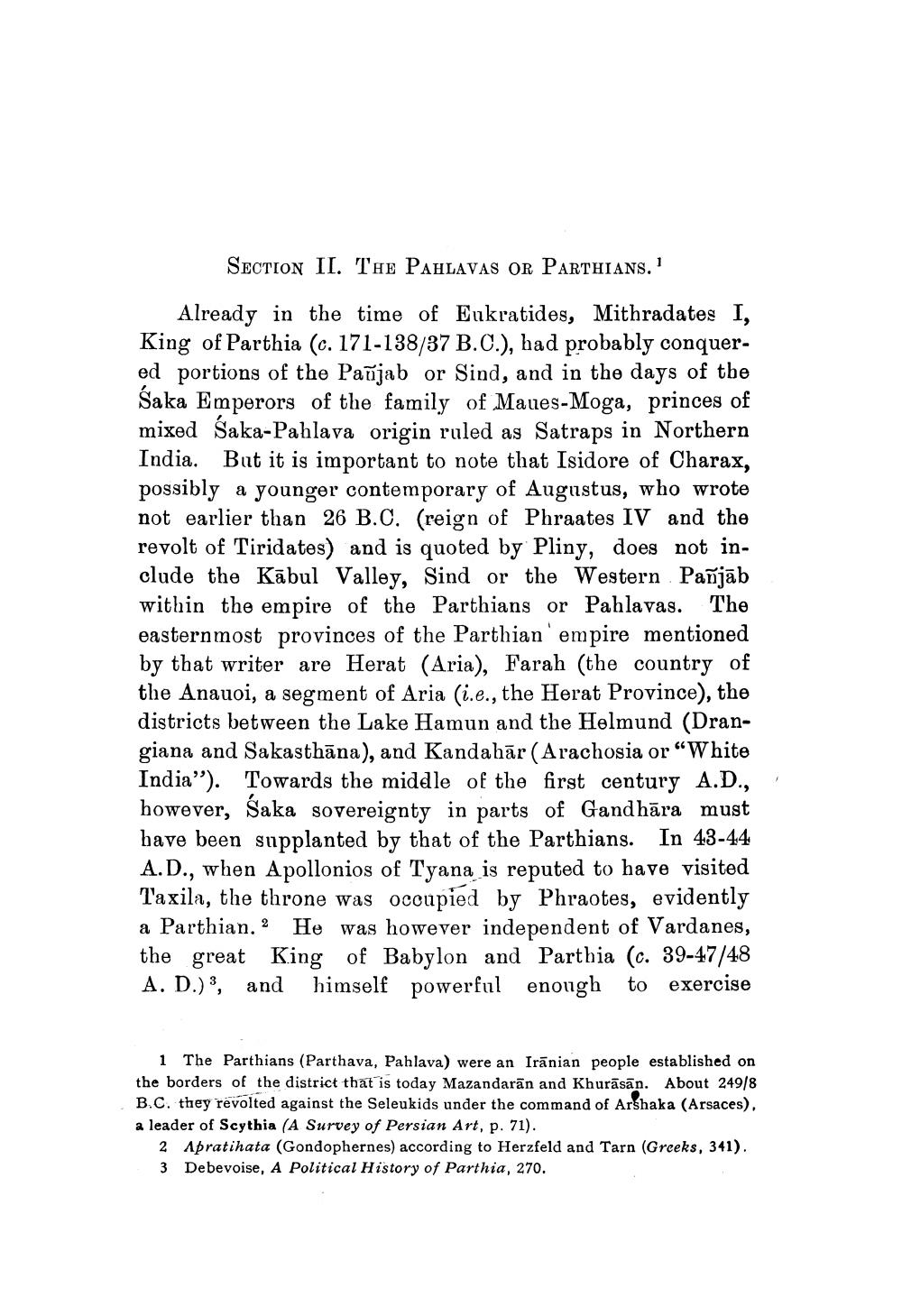________________
SECTION II. THE PAHLAVAS OR PARTHIANS.
Already in the time of Eukratides, Mithradates I, King of Parthia (c. 171-138/37 B.C.), had probably conquered portions of the Pañjab or Sind, and in the days of the Saka Emperors of the family of Maues-Moga, princes of mixed Śaka-Pahlava origin ruled as Satraps in Northern India. But it is important to note that Isidore of Charax, possibly a younger contemporary of Augustus, who wrote not earlier than 26 B.C. (reign of Phraates IV and the revolt of Tiridates) and is quoted by Pliny, does not include the Kābul Valley, Sind or the Western Pañjāb within the empire of the Parthians or Pahlavas. The easternmost provinces of the Parthian'empire mentioned by that writer are Herat (Aria), Farah (the country of the Anauoi, a segment of Aria (i.e., the Herat Province), the districts between the Lake Hamun and the Helmund (Drangiana and Sakasthāna), and Kandahār (Arachosia or “White India”). Towards the middle of the first century A.D., however, Saka sovereignty in parts of Gandhāra must have been supplanted by that of the Parthians. In 43-44 A.D., when Apollonios of Tyana is reputed to have visited Taxila, the throne was occupied by Phraotes, evidently a Parthian. He was however independent of Vardanes, the great King of Babylon and Parthia (c. 39-47/48 A. D.) , and himself powerful enough to exercise
1 The Parthians (Parthava, Pahlava) were an Irānian people established on the borders of the district that is today Mazandaran and Khurāsān. About 249/8 B.C. they revolted against the Seleukids under the command of Arshaka (Arsaces). a leader of Scythia (A Survey of Persian Art, p. 71).
2 Apratihata (Gondophernes) according to Herzfeld and Tarn (Greeks, 341). 3 Debevoise, A Political History of Parthia, 270.




